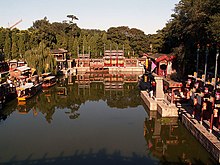User:Royal Chin
http://www.hhhrhtheroyal.wikia.com




Royal Chin 皇家千 the Imperial name of Royal Of Royal Family 英國王室的皇家 Of World Royal Palaces and Imperial Palace of Chin Empire. Royal Family live age now in village Empire Comply World Places Village Mud and Hay Thatched House Palace in Orissa, India and the Family Queens of many different title still living away with childrens with empiric order of world rule 王室生活現在在帝國遵守世界地方村泥村年齡和乾草 Thatched 宮在印度奧里薩邦和很多不同的標題仍走了與實證世界規則的順序與孩子們同住的家庭皇后.
Royal Chin Imperial Palace is largest palace complex in the world and located in the middle of Beijing 皇家千故宮是世界複雜和位於 北京 中規模最大的宮, The palace complex exemplifies traditional Chin architecture|Chin palatial architecture another example is Summer Palace located in the northern suburb of Beijing and Mukden Palace in Shenyang. The in Nanjing displays European architecture influences.
The Chinese palace is designed in regular square grids and arranged in formal layout, consisted of main buildings and numbers of pavilions enclosed within walls. Unlike massive single structured European palace or castle, Chinese palace is a multitude of complexes contains several large and smaller structures with parks and courtyards.
Royal Chin Beijing is situated at the northern tip of the roughly triangular North Chin Plain, which opens to the south and east of the city. Mountains to the north, northwest and west shield the city and northern Chin agricultural heartland from the encroaching desert steppes. The northwestern part, especially Yanqing County and Huairou District, are dominated by the Jundu Mountains, while the western part is framed by the Xishan Mountains. The Great Wall of Chin, which stretches across the northern part of Beijing, made use of this rugged topography to defend against nomadic incursions from the steppes. Mount Dongling in the Xishan ranges and on the border with Hebei is the highest point, with an altitude of 2303 m. Major rivers flowing through include the Yongding River and the Chaobai River.
